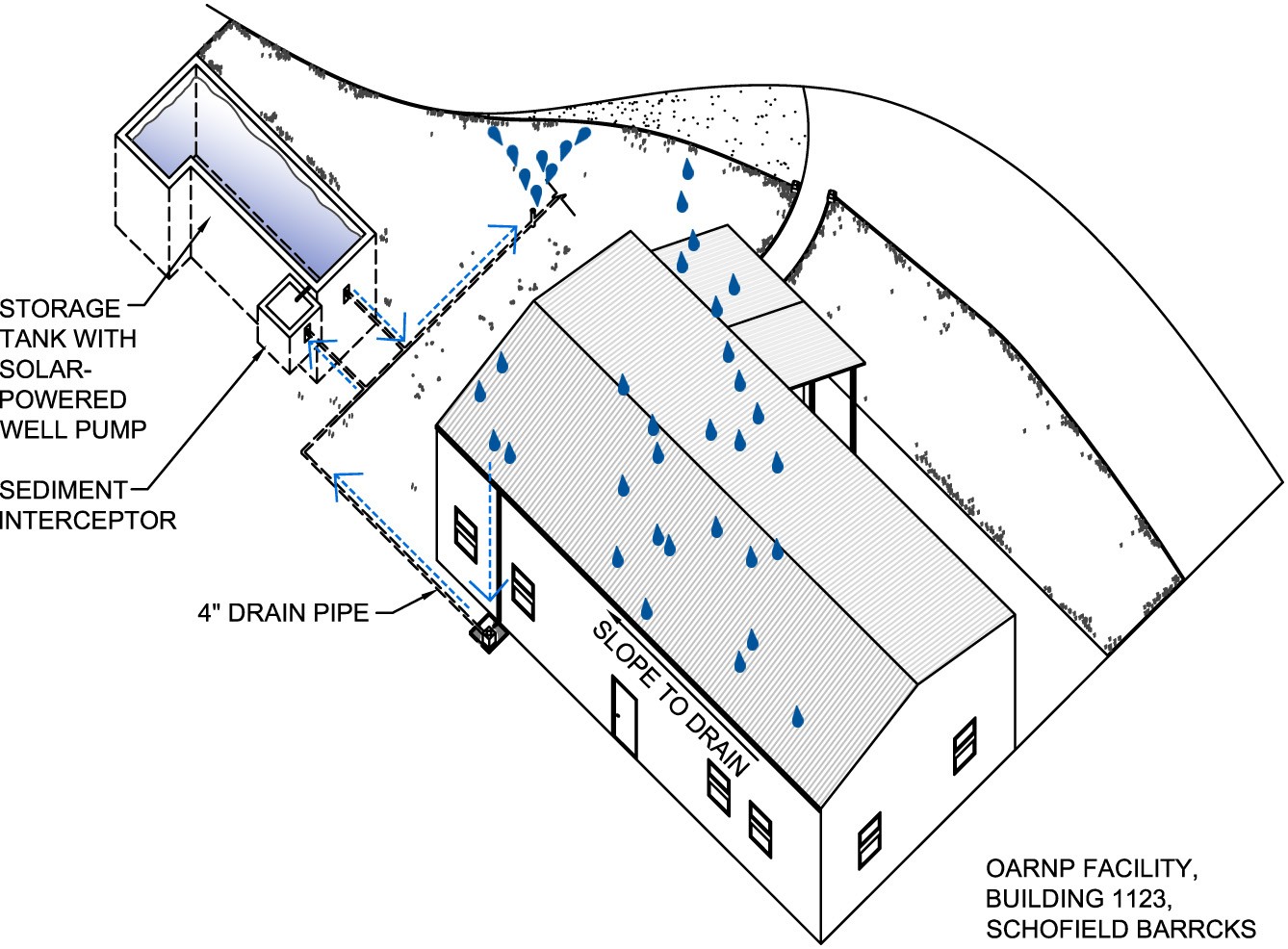SCHOFIELD BARRACKS, Hawaii -- In an effort to demonstrate sustainable water management practices, U.S. Army Garrison-Hawaii's Directorate of Public Works' Environmental Division has developed a rainwater-harvesting project with the Oahu Army Natural Resources Program facility, located in Area X, here.
The project celebrates rainwater as a resource by collecting, storing and using it to irrigate the lawn bordering OARNP's interpretative garden. In the true "green" spirit of the project, OARNP staff located an abandoned underground sediment tank adjacent to their office building, and "re-purposed" it as a storage vessel for rainwater from the building's roof.
Project construction will occur in two phases. In the first phase, completed July 2010, Mark Gitschlag, a local Boy Scout and military family member who was, at the time, seeking his Eagle Scout Badge, coordinated a group of volunteers to install the irrigation system. The system temporarily connects to the potable water supply until completion of the second phase, scheduled for completion by in-house DPW employees in fiscal year 2011. The second phase includes refurbishing the sediment tank for rainwater storage, modifying the roof gutters and installing the plumbing to convey rainwater to the sediment tank.
Through the incorporation of sustainable technology - including a solar-powered well pump and irrigation controllers, and a weather station that adjusts the application of irrigation water based on local precipitation - the project will achieve water and energy savings, and fulfill several of the energy and installation readiness goals outlined in the Installation Management Campaign Plan 2010-2017.
Rainwater harvesting is the practice of collecting rainwater from roofs and other hard surfaces, for use in gardening, washing and flushing toilets. It is a long-proven, sustainable practice; evidence of rainwater harvesting dates back to 1500 B.C. The practice is prevalent throughout the state of Hawaii, too, with an estimated 60,000 people relying on rainwater harvesting for their water needs.
Benefits of rainwater harvesting include conservation of the potable water supply and of energy involved in treating and transporting potable water, and the prevention of pollution associated with storm-water runoff.
In new development projects, rainwater harvesting is a practice worth up to five rating points in the water efficiency category for Leadership in Energy and Environmental Design green buildings.
Rainwater Harvesting Quick Facts
Aca,!Ac 600 gallons of rainwater can be harvested from a 1,000-square-foot roof after a 1-inch rain.
Aca,!Ac 600 gallons of rainwater can be used to flush a toilet 375 times, wash a car five times or to water a lawn.
Aca,!Ac Kilauea Military Camp relies on rainwater harvesting for its water needs. A total of 6.5 acres of roof-surface capture rainwater. Aboveground tanks store 3 million gallons of water.
Aca,!Ac Annually, the system collects around 11.5 million gallons of water.
(Editor's Note: Hayley Diamond works for the Clean Water Program in the Directorate of Public Works' Environmental Division. This article appeared in the Hawaii Army Weekly's Oct. 22 special insert on sustainability. Click <a href="http://www.hawaiiarmyweekly.com/special-inserts/">here</a> to view the entire 8-page feature.)


Social Sharing